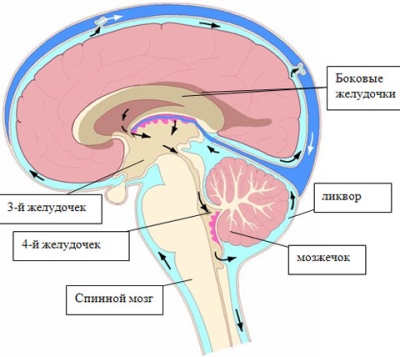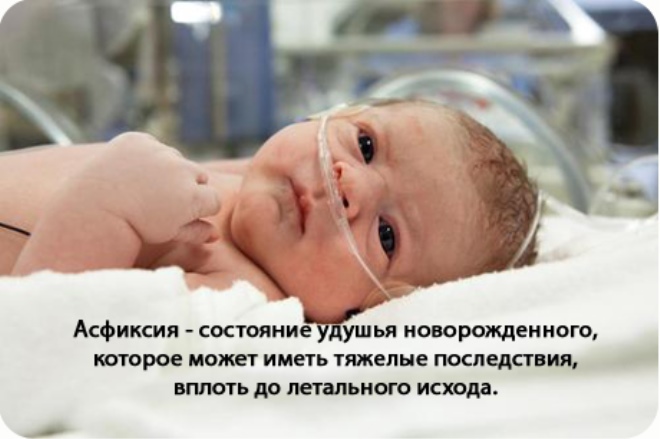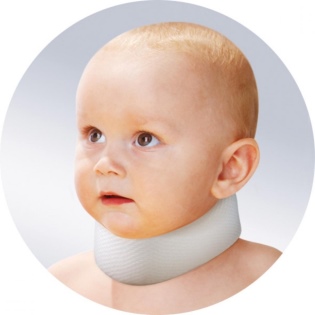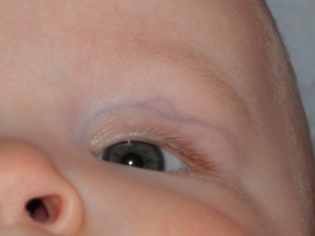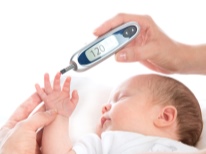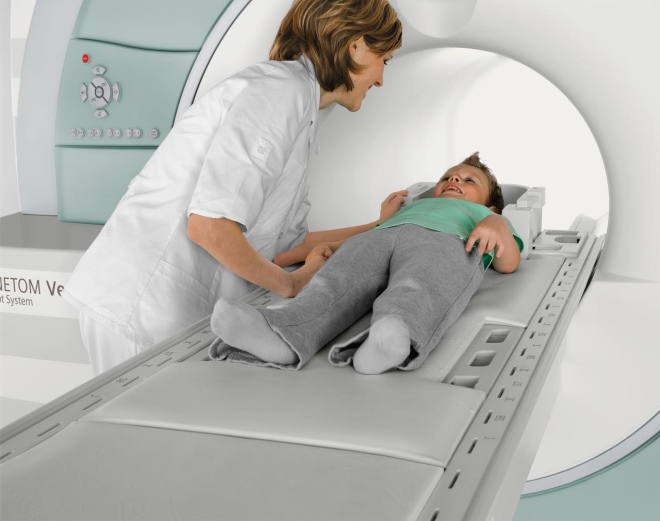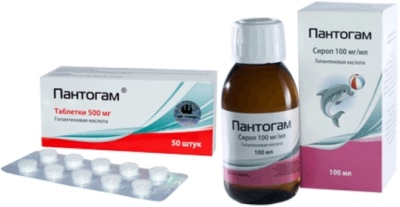Intracranial pressure in a child
Increasing the level of intracranial pressure often causes a real panic attack in parents. Confused, they absolutely do not know what to do in such a situation with their child, where to turn.
What it is?
In modern pediatric practice, more and more cases of increased intracranial pressure are recorded. In a child, this can manifest itself in different ways. Mild cases of the disease occur even without significant changes in health. In children, only a little disturbed behavior, there are nonspecific symptoms. More severe forms of the disease require emergency medical intervention.
Doctors also call high blood pressure in the brain intracranial hypertension or hypertensive syndrome. In this condition, microcirculation of the liquor fluid occurs. Normally, cerebrospinal fluid circulates between the membranes of the spinal cord and brain. It washes vital organs and carries all the necessary nutrients.
Usually, an increase in intracranial pressure is not an independent disease. It arises due to several different reasons. Currently, there are quite a large number of them. Provocative factors affect the circulation of cerebrospinal fluid, which ultimately contributes to the increase in intracranial pressure.
Norm
The brain is covered outside with several shells: solid, arachnoid and soft. Liquid fluid circulates freely between them. It is formed in special tanks - cerebral ventricles. They are created by nature not only for the formation of liquor, but also for its storage. Proper circulation of cerebrospinal fluid contributes to normal intracranial pressure.
The circulation of cerebrospinal fluid occurs between the membranes of the brain and spinal cord. Between these anatomical structures there are special microscopic gaps. They contribute to the smooth flow of fluid and maintaining a stable level of intracranial pressure. Liquor is formed regularly. This contributes to maintaining and maintaining the level of intracranial pressure in strictly defined values.
Hypertension syndrome may appear in a child as a result of deviations of indicators from the norm. The normal value of intracranial pressure in newborns is 2-6 mm Hg. Art. In older children - from 3 to 7 mm Hg. Art. As the child grows and grows, the measurements of intracranial pressure change. In adults, normal intracranial pressure is usually between 5 and 15 mmHg. Art.
A small increase does not mean that the child is seriously ill. Even intense physical exertion, severe psycho-emotional stress, or the consequences of a cold that you just had, can lead to such a condition.
The reasons
The development of hypertensive syndrome is caused by various reasons that contribute to the violation of the outflow of cerebrospinal fluid. Excessive accumulation of cerebrospinal fluid in the cerebral ventricles and between the membranes of the brain leads to an increase in intracranial pressure, which can significantly exceed normal levels.
Most often, the following reasons lead to an increase:
- Intrauterine hypoxic state of the fetus. This condition occurs during complicated labor.Usually, different pathologies of the placenta are found in expectant mothers before birth. In some cases, childbirth resulting in complications leads to fetal hypoxia.
- Injuries received during childbirth. Improperly performed surgery contributes to the infliction of head injuries on the baby during labor. This condition leads to mechanical damage to the cerebral cisterns - and even micro-tearing of the membranes.
- Neonatal asphyxia. This pathological condition is accompanied by an increased accumulation of carbon dioxide in the blood of a newborn with insufficient oxygen content. Prolonged oxygen deprivation leads to impaired liquor formation and disruption of its outflow, which contributes to the development of a hypertensive state.
- Various infections. Both viruses and some types of bacteria can lead to the development of intracranial hypertension. The microscopic size allows these microorganisms to easily penetrate the blood-brain barrier and cause inflammation in the brain. Often the consequence of meningococcal disease leads to hypertensive syndrome.
- Congenital anomalies. In the case of Arnold Chiari’s disease, some damage to the medulla oblongata occurs in the occipital foramen due to the anatomical defect of the structure. Ultimately, this condition is accompanied by a violation of the outflow of cerebrospinal fluid from the cerebral ventricles to the membranes of the spinal cord.
- Various toxic poisoning. Toxins that enter the body quickly spread throughout the bloodstream and easily penetrate the hemato-encephalic barrier. Not only exogenous, but also endogenous substances can cause disturbances in the circulation of the cerebrospinal fluid and an increase in intracranial pressure.
- Injuries in the cervical spine. Often, subluxations, as well as displacement of the cervical vertebrae as a result of injuries and injuries, can lead to a disturbance in the circulation of the cerebrospinal fluid. Violation of the outflow contributes to increased intracranial pressure.
- Neoplasm. Various tumors that grow in the brain and spinal cord can compress the cerebral ventricles. This leads to a violation of the outflow of cerebrospinal fluid. With large formations hypertension syndrome is quite pronounced.
- Meningitis and inflammatory diseases of the lining of the brain. The inflammatory process quickly spreads to all brain structures. Spinal fluid is formed in a disturbed mode. There is a strong violation of the outflow of the cerebrospinal fluid into the spinal space. This leads to the development of hypertensive syndrome.
- Intracranial hemorrhage. In babies, this condition occurs as a result of traumatic brain injury or hemorrhagic vasculitis. Damage to blood vessels leads to disruption of the formation of cerebrospinal fluid, which triggers the development of intracranial hypertension.
- Severe obesity. This condition contributes to the development of a child in violation of venous outflow.
- Diseases of the endocrine system. Reduced thyroid function, as well as adrenal pathology often become the causes of hypertension syndrome in children. Disturbed hormone levels contribute to spasm of blood vessels supplying the brain, which ultimately provokes the development of intracranial hypertension.
Symptoms
Recognizing a slight increase in intracranial pressure in a child is quite difficult. Symptoms of hypertensive syndrome are often non-specific. They can be confused with other manifestations occurring in many inflammatory diseases.
To recognize the increase in intracranial pressure can be on the following clinical signs:
- Increase in head size. This symptom is especially pronounced in newborn babies. In severe hypertension, head sizes can exceed the age norm by several centimeters.
- Changing eye sockets. Eyes bulge hard enough forward. The upper eyelids usually cannot close tightly. This symptom can be identified independently. In babies, the irises of the eyes are clearly visible during sleep.
- Distinct ripple of large fontanel. This symptom occurs in newborn babies. On examination, the large fontanelle slightly protrudes over the skin of the head.
- Strongly projecting veins. They are especially pronounced in children in the first days after birth. With the appearance of hypertensive syndrome, the veins become overcrowded, they are very clearly visible.
- Increased regurgitation. A rather characteristic symptom for newborns. The increased level of intracranial pressure leads to compression of all vital centers, which are responsible for the basic functions of the body. Baby can regurgitate food many times - throughout the day.
- Change in general condition. Kids become very restless. The position on the back only increases the painful condition. On the hands they feel much better. In the horizontal position, the filling of the veins is greatly enhanced, which contributes to the growth of intracranial pressure.
- Sleep disturbance. Usually, babies have difficulty falling asleep. Sleep becomes superficial and easily disturbed. Usually the child can not sleep more than a couple of hours. He constantly wakes up during the night, may be scared. Usually this symptom is strongly pronounced in children aged 2-7 years.
- Violation of the general mental and physical development. When examining such a child, the attending pediatrician notices that the baby’s health indicators are very different from the age norms. Baseline indicators of physical development in young patients with regular hypertensive syndrome strongly deviate from normal values.
- The appearance of a headache. Most characteristic of its increase in the evening or at night. In some cases, pain occurs in children and after waking up. Headache has a diffuse nature. The intensity can be from very light to unbearable and depends on the severity of the underlying disease.
- Speech impairment. Doctors call this the term "aphasia." In case of violation of the work of individual centers in the brain, the speech apparatus is damaged. It becomes difficult for a child to choose words. When talking, he may confuse speech turns or forget the most simple expressions.
- Permanent nausea. In severe cases, vomiting. Usually it is single, quite abundant. Vomiting with intracranial hypertension is not at all associated with the food that the child received the day before. Usually, it does not bring the child a strong improvement in health.
- Difficulty in remembering. School-age children have learning problems. Even simple tasks can cause them significant difficulties. Children with constant intracranial hypertension are quite difficult to concentrate on specific subjects.
- Behavior change. The child, by virtue of his morbid state, becomes very nervous, moody. Many kids refuse to eat, their appetite is getting worse. From the side of such a baby looks quite depressed.
Diagnostics
Measure intracranial pressure in the home is currently not possible. All methods are auxiliary. Each pediatrician can check the symptoms of intracranial hypertension in a child. If you suspect the presence of hypertensive syndrome, it is better to show your baby to a neurologist. This doctor has the necessary knowledge of what treatment is needed to eliminate the adverse symptoms.
The following examinations will help identify intracranial hypertension:
- General clinical blood tests. They help establish the presence of viral or bacterial infections in the body that could cause intracerebral infection.
- Research liquor. Appointed only for special medical reasons (children's neurologists). Allows you to identify specific neuroinfections and the consequences of injuries of the spinal cord and brain.
- Consultation of an oculist and conducting an extended examination of the fundus. The specialist can identify various spasms of the blood vessels, which is an indirect sign of the presence of intracranial hypertension.
- Neurosonography. Helps to establish some pathological changes that have occurred in the brain.
- Ultrasound procedure. Modern techniques allow us to describe the anatomical defects of blood vessels, as well as measure intracranial pressure.
- Computed and magnetic resonance imaging. Enough informative and highly accurate methods. They help doctors correctly evaluate all the existing pathologies that have arisen in the brain and cerebral vessels. The method is especially indicated for babies who have developed intracranial hypertension as a result of birth trauma, as well as after traumatic injury.
Complications and consequences
Intracranial hypertension is a condition that can be very dangerous. With a long or adverse course, it can lead to the onset of very life-unfavorable complications. These include: the development of epileptic status, mental impairment, the appearance of symptoms of vegetative dystonia in adolescence, reduced visual function, increased fatigue and excessive irritability. In some cases, among the effects of the disease, doctors note hyperactivity.
Treatment
For the treatment of intracranial hypertension, it is very important to first determine what caused the condition. Simply eliminating the effects of the disease is wrong. This can only lead to a temporary improvement in well-being. However, after some time (if the cause has not been eliminated), the disease may develop again.
After establishing intracranial hypertension, the doctor will be able to make comprehensive recommendations for treatment. Hypertension syndrome can be cured at home, but with regular monitoring by doctors. For treatment, you should choose only those drugs that are approved for use in pediatric practice.
Diuretic medications help eliminate adverse symptoms. They are discharged to the exchange rate. As therapeutic agents, it is also possible to use medicinal herbs with a diuretic effect. These include lingonberry leaf, bearberry, parsley decoction, celery juice and others. Such tools can be used for a long time - until the state is fully stabilized.
To improve the performance of the brain, special preparations are used that have a nootropic effect or have a positive effect on the tone of the cerebral vessels. They contribute to the normal functioning of the CSF inside the interventricular space of the brain. As a nootropic drug can be used "Pantogam».
With intracranial hypertension, various symptomatic agents are prescribed. Antiemetic drugs help eliminate adverse symptoms - nausea, vomiting. Vitamin polycomplexes enriched with group B are necessary for normal functioning of the nervous system and adequate circulation of the cerebrospinal fluid. Treatment of intracranial hypertension is carried out until the complete elimination of adverse symptoms.
Dr. Komarovsky will help to understand this "terrible" diagnosis. Why is this disease diagnosed so often now? Is there any reason for concern?


